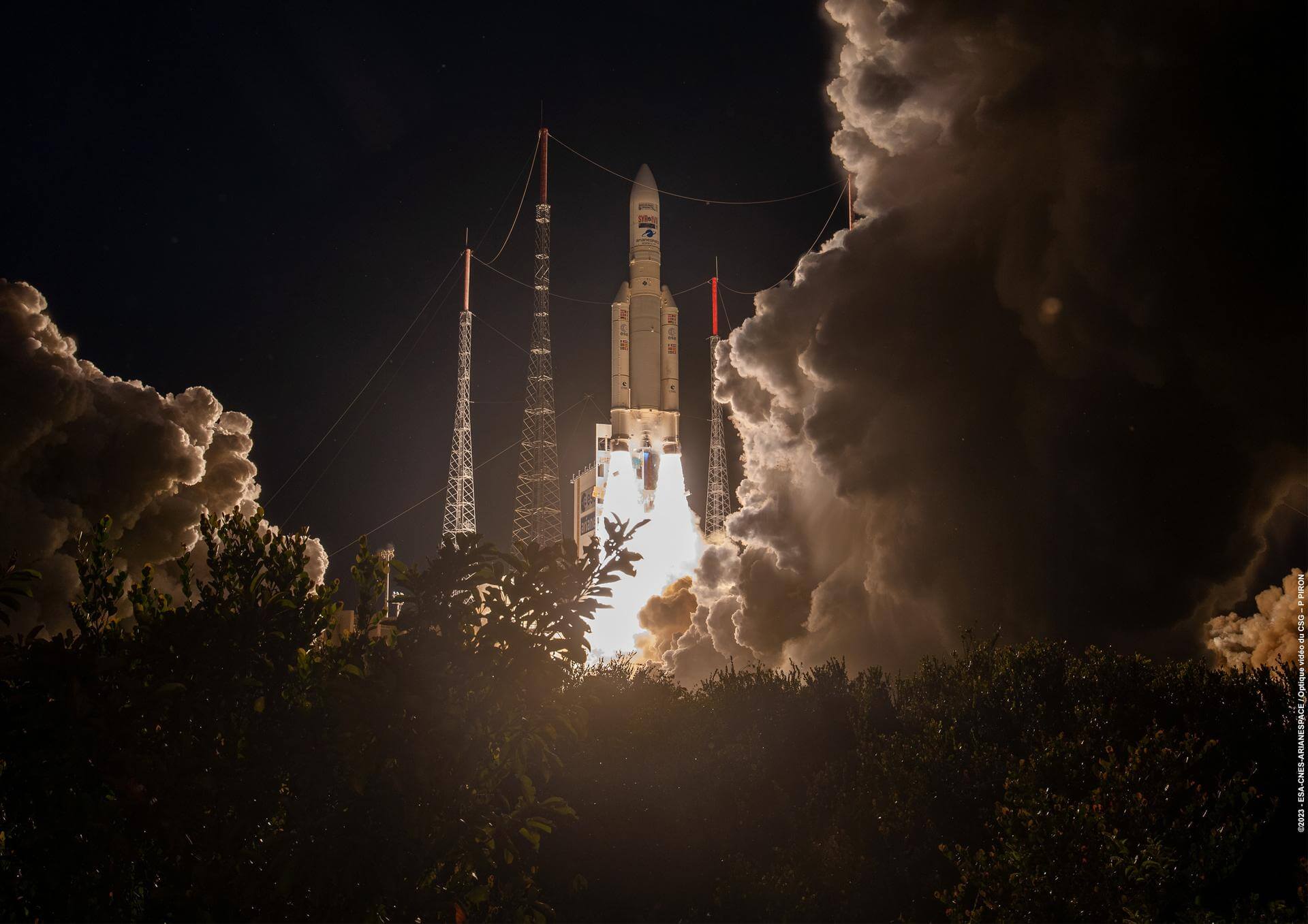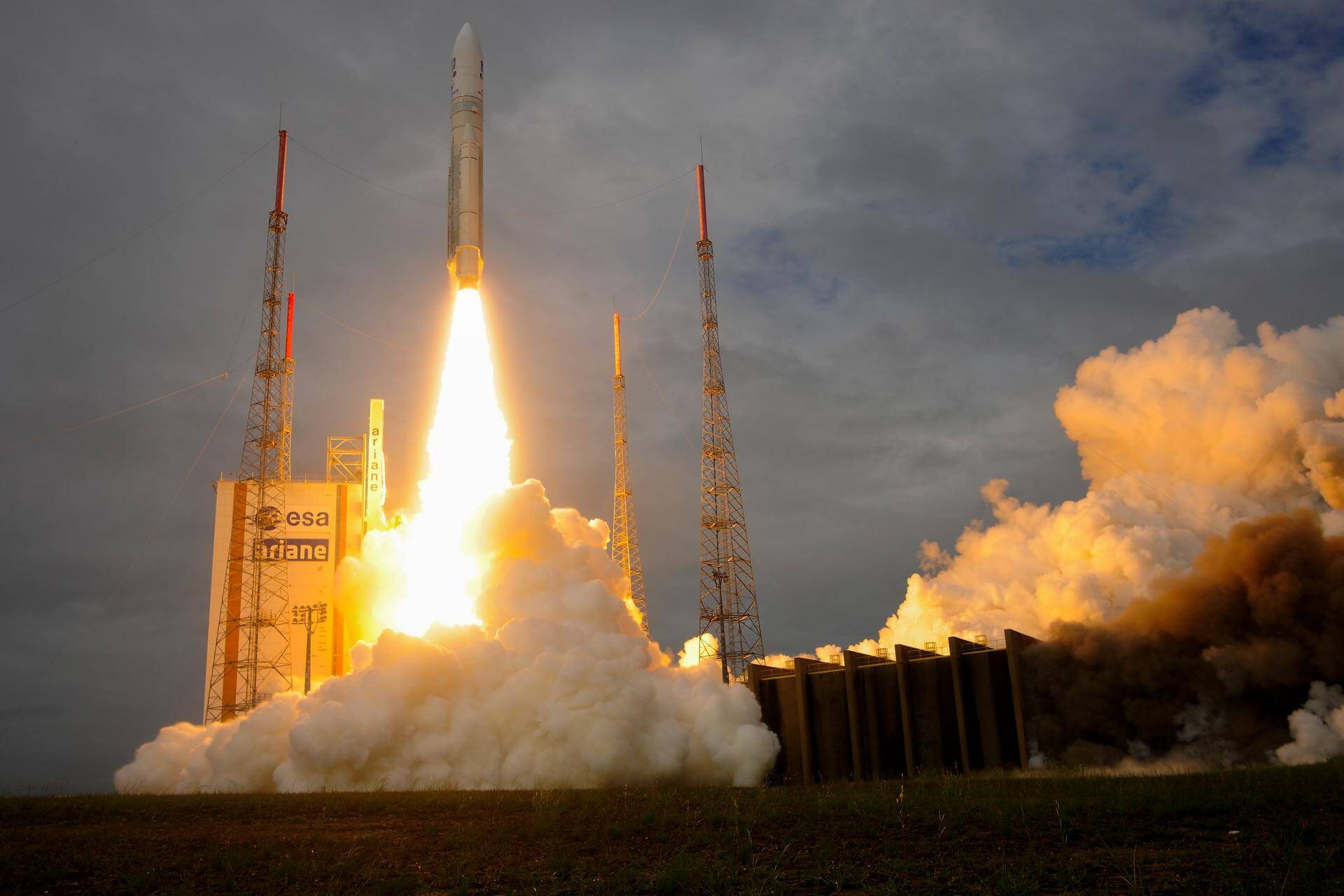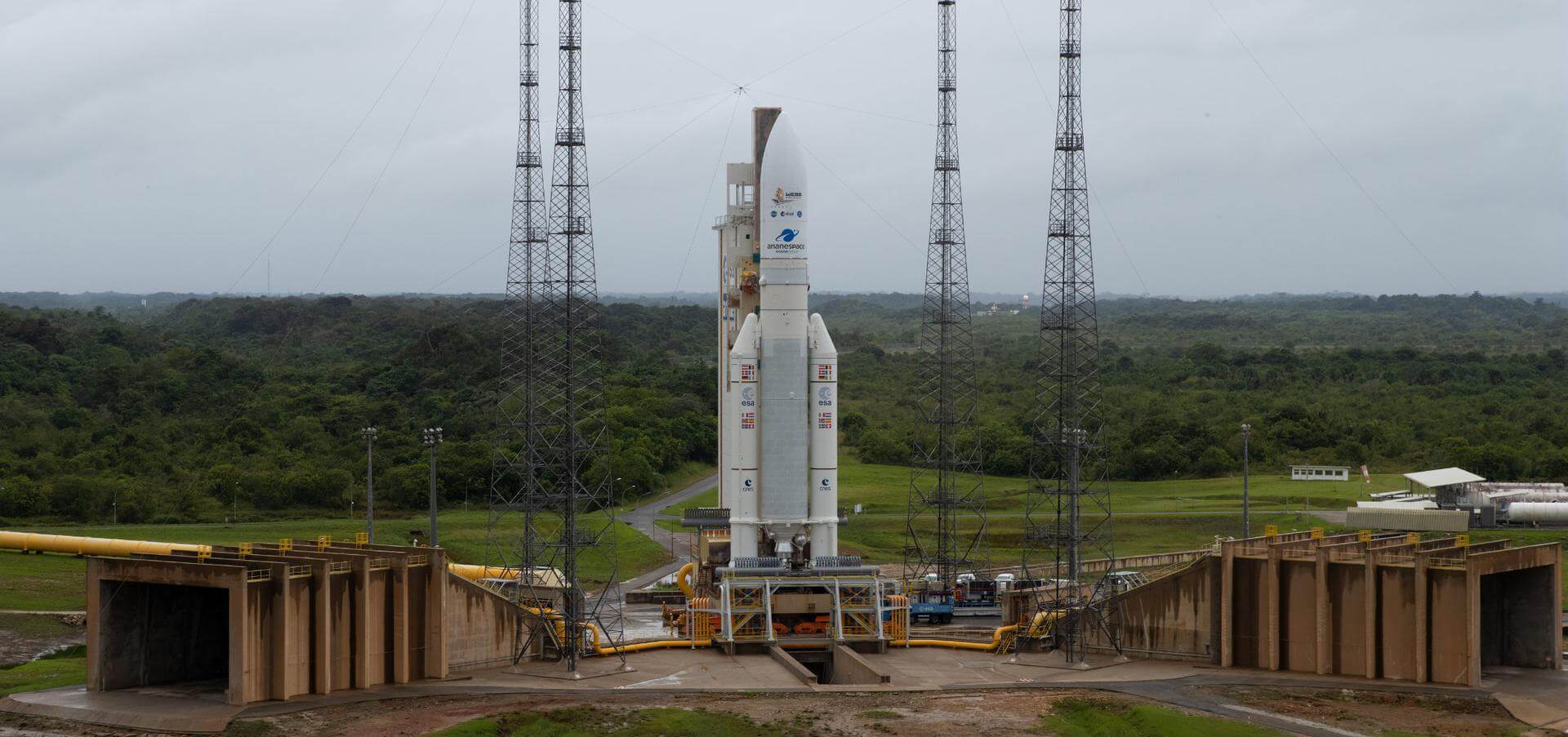
Ariane 5 ECA+
In-activeArianeGroup (AG)
Aug. 7, 2019
Description
Ariane 5 ECA+ is a variant of the Ariane 5 heavy-lift vehicle, with a taller ECA-D upper stage.
Specifications
-
Max Stage
2 -
Length
57.7 m -
Diameter
5.4 m -
Fairing Diameter
5.4 m -
Launch Mass
780.0 T -
Thrust
11400.0 kN
Family
-
Name
Ariane 5 ECA+ -
Family
― -
Variant
ECA+ -
Alias
― -
Full Name
Ariane 5 ECA+
Payload Capacity
-
Launch Cost
― -
Low Earth Orbit
― -
Geostationary Transfer
Orbit
10200.0 kg -
Direct Geostationary
― -
Sun-Synchronous Capacity
―
ArianeGroup
Commercial
CEO: Martin Sion
AG 2015ArianeGroup (formerly Airbus Safran Launchers) is an aerospace company based in France. A joint venture between Airbus and Safran, the company was founded in 2015 and is headquartered in Issy-les-Moulineaux. It consists of three core arms: aerospace, defence and security.
Ariane 5 ECA+ | Syracuse 4B & Heinrich Hertz (H2Sat)
ArianeGroup | FranceGuiana Space Centre, French Guiana
July 5, 2023, 10 p.m.
Status: Launch Successful
Mission:
Syracuse 4B is a French military communications satellite built by Thales Alenia Space. Heinrich Hertz (H2Sat) is a small geostationary communications satellite built by OHB System and the German Aerospace Center (DLR) to explore and test new broadband communications technologies.
Geostationary Transfer OrbitAriane 5 ECA+ | JUICE (JUpiter ICy moons Explorer)
ArianeGroup | FranceGuiana Space Centre, French Guiana
April 14, 2023, 12:14 p.m.
Ariane 5 ECA+ | Galaxy 35 & 36, MTG-I1
ArianeGroup | FranceGuiana Space Centre, French Guiana
Dec. 13, 2022, 8:30 p.m.
Ariane 5 ECA+ | Eutelsat Konnect VHTS
ArianeGroup | FranceGuiana Space Centre, French Guiana
Sept. 7, 2022, 9:45 p.m.
Ariane 5 ECA+ | Measat-3d & GSAT 24
ArianeGroup | FranceGuiana Space Centre, French Guiana
June 22, 2022, 9:50 p.m.
Ariane 5 ECA+ | James Webb Space Telescope (JWST)
ArianeGroup | FranceGuiana Space Centre, French Guiana
Dec. 25, 2021, 12:20 p.m.
Status: Launch Successful
Mission:
The James Webb Space Telescope is a space telescope developed by NASA, ESA and CSA to succeed the Hubble Space Telescope as NASA's flagship astrophysics mission. Its primary mirror, the Optical Telescope Element, is composed of 18 hexagonal mirror segments which combine to create a 6.5 m diameter mirror, considerably larger than Hubble's 2.4 m mirror. This will allow JWST to provide improved infrared resolution and sensitivity over Hubble, and will enable a broad range of investigations across the fields of astronomy and cosmology, including observing some of the most distant events and objects in the universe, such as the formation of the first galaxies.
Sun-Earth L2Ariane 5 ECA+ | SES-17 & Syracuse 4A
ArianeGroup | FranceGuiana Space Centre, French Guiana
Oct. 24, 2021, 2:10 a.m.
Status: Launch Successful
Mission:
SES-17 is a Ka-band high-throughput geostationary communications satellite built by Thales Alenia Space designed to provide mobile internet services to airline passengers over the Americas and the Atlantic Ocean. Syracuse 4A is a French military communications satellite built by Thales Alenia Space.
Geostationary Transfer OrbitAriane 5 ECA+ | Star One D2 & Eutelsat Quantum
ArianeGroup | FranceGuiana Space Centre, French Guiana
July 30, 2021, 9 p.m.
Status: Launch Successful
Mission:
Star One D2 is a 6.2 tons satellite built by Space Systems Loral for operator Star One, subsidiary of Brazilian Embratel. Its architecture is based on a SSL-1300 platform and equipped with C, X, Ku and Ka-band transceivers. It will provide communications services to Latin America for at least 15 years. Eutelsat Quantum is an experimental communications satellite carrying a payload able to be reconfigured by software. It is developed by ESA, Eutelsat and Airbus Defence and Space.
Geostationary Transfer Orbit VA254Ariane 5 ECA+ | Galaxy 30, MEV-2 & BSAT-4B
ArianeGroup | FranceGuiana Space Centre, French Guiana
Aug. 15, 2020, 10:04 p.m.
Status: Launch Successful
Mission:
Galaxy-30 is a geostationary communications satellite for Intelsat. Satellite is built by Northrop Grumman Innovation Systems (NGIS) and is planned to provide video distribution and broadcast services to customers in North America. Galaxy 30 satellite is launched in tandem with MEV-2 vehicle. MEV-2, which stands for Mission Extension Vehicle-2, is the second servicing mission by NGIS. MEV-2 will rendezvous and dock with the Intelsat 1002 satellite in early 2021. Then, MEV-2 will use its own thrusters and fuel supply to control the satellite’s orbit, thereby extending its useful lifetime. Another passenger of the flight is the BSAT-4b satellite for the Japanese operator BSAT. BSAT-4b will serve as a back-up for BSAT-4a satellite, launched in 2017. BSAT-4b will provide Direct-to-Home television services and is expected to operate for at least 15 years.
Geostationary Transfer OrbitAriane 5 ECA+ | JCSAT-17 & GEO-KOMPSAT-2B
ArianeGroup | FranceGuiana Space Centre, French Guiana
Feb. 18, 2020, 10:18 p.m.
Status: Launch Successful
Mission:
JCSAT-17 is a Japanese communication satellite of SKY Perfect JSAT Corporation. Its payloads incorporate S-band, C-band and Ku-band transponders, which will provide satellite communication services. The S-band and C-band transponders will serve NTT DOCOMO, Inc., the largest telecommunications company in Japan, for its flexible mobile communications services in Japan and the surrounding region under IRU contract (Indefeasible Right of Use). SKY Perfect JSAT will support NTT DOCOMO’s satellite communication services. JCSAT-17 also includes a flexible processor that will allow SJC to redirect capacity to concentrate on disaster relief efforts or other high-volume events. The GEO-KOMPSAT-2 program is a national program of the Korean government to develop and operate two civilian geostationary satellites sharing the same satellite bus: GEO-KOMPSAT-2A for meteorological and space weather monitoring missions; and GEO-KOMPSAT-2B for Earth environment monitoring and ocean monitoring missions. The GEO-KOMPSAT 2 program also ensures the succession for the COMS program (Communication, Ocean and Meteorological Satellite). The satellite carries two main payloads: GOCI II (Geostationary Ocean Color Imager II), provided by Airbus Defence and Space; and the GEMS (Geostationary Environment Monitoring Spectrometer), provided by Ball Aerospace & Technologies.
Geostationary Transfer OrbitAriane 5 ECA+ | Intelsat 39 & EDRS-C/HYLAS 3
ArianeGroup | FranceGuiana Space Centre, French Guiana
Aug. 6, 2019, 7:30 p.m.
Status: Launch Successful
Mission:
EDRS-C is one of the two EDRS (European Data Relay System) satellites. EDRS is the European constellation of two geostationary data relay satellites that will relay information and data between satellites, spacecraft, unmanned aerial vehicles, and ground stations. Broadband communications payload called HYLAS 3 is placed on EDRS-C satellite, and is to complement HYLAS 1 and HYLAS 2 satellites already in orbit.
Geostationary Transfer OrbitAriane 62
Galileo L14 (FOC FM33 & FM34)
Ariane Launch Area 4 - Guiana Space Centre, French GuianaPayload consists of two satellites for Europe's Galileo navigation system.
Atlas V 551
Amazon Leo (LA-04)
Space Launch Complex 41 - Cape Canaveral SFS, FL, USAAmazon Leo, formerly known as Project Kuiper, is a mega constellation of satellites in Low Earth Orbit that will offer broadband internet access, thi…
Long March 4B
Ziyuan-3-04
Launch Complex 9 - Taiyuan Satellite Launch Center, People's Republic of ChinaThe ZY-3 (Ziyuan-3, 'Resource-3') series represents China's first high-resolution, stereoscopic mapping satellites for civilian use. The second sa…
Falcon 9
Starlink Group 6-82
Space Launch Complex 40 - Cape Canaveral SFS, FL, USAA batch of 29 satellites for the Starlink mega-constellation - SpaceX's project for space-based Internet communication system.
Falcon 9
Starlink Group 15-12
Space Launch Complex 4E - Vandenberg SFB, CA, USAA batch of 27 satellites for the Starlink mega-constellation - SpaceX's project for space-based Internet communication system.




